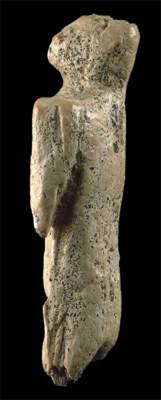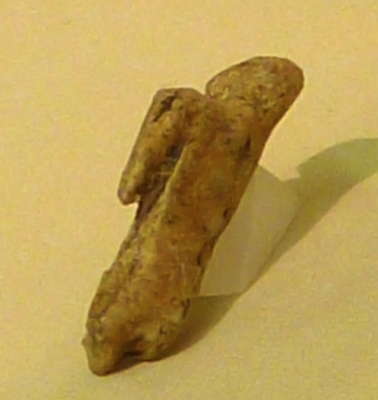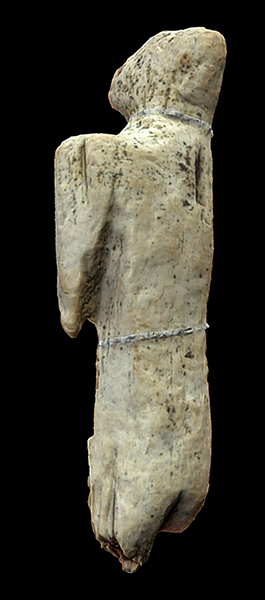Back to Don's Maps
Back to Venus figures from the Stone Age
Der Kleiner Löwenmensch - The Small Lion Man from Hohle Fels
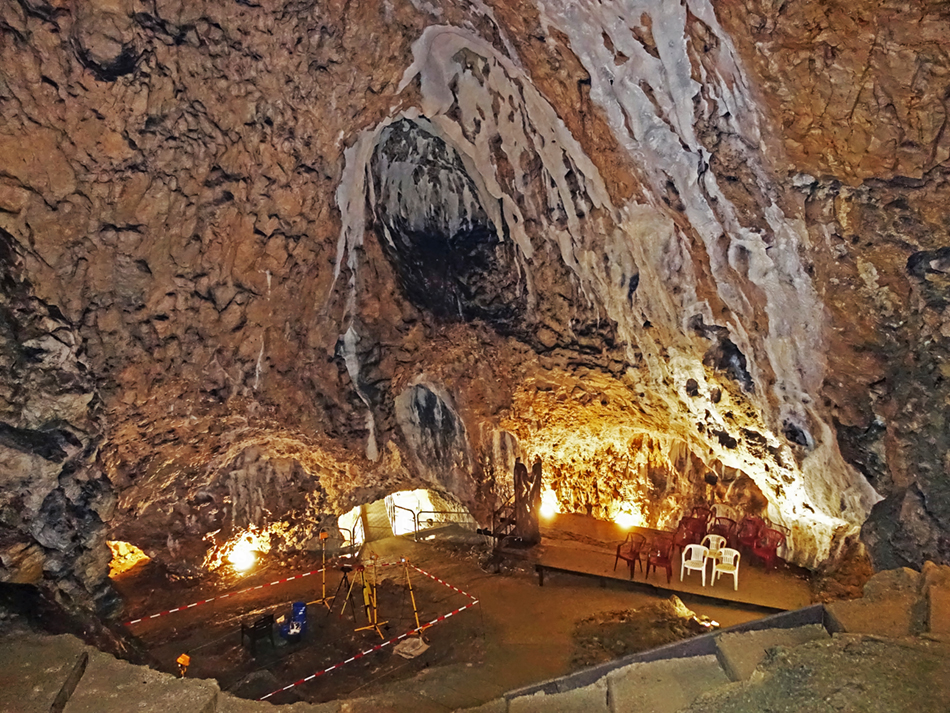
The walkway shown in the lower part of this photo, leads to this vast cavern, which has been very well appointed with lights and paths. It was never lived in by the Hohle Fels people, as is also the case with most other such caves with large interior spaces. The entry to caves are far more attractive places to live in, usually, with access to dry and well lit living spaces, with good access to water and views of approaching game.
Photo: Don Hitchcock 2018
After the original, larger Löwenmensch was found in the cave of Hohlenstein-Stadel in the Valley of Lone, Baden-Wurttemberg (Germany), in 1931, a similar, but smaller, lion-headed sculpture was found, along with other animal figures and several flutes, in another cave, Hohle Fels, in the same region of Germany.This leads to the possibility that the lion-figure played an important role in the mythology of humans of the early Upper Palaeolithic. The sculpture can be seen in the Ulmer Museum in Ulm, Germany.
Text adapted from: http://www.historyofinformation.com/index.php?category=Archaeology and Wikipedia.
Hohle Fels small lion man, Der Kleiner Löwenmensch, only 26 mm (one inch) tall, of mammoth ivory. It obviously has strong affinities with the Löwenmensch of the Stadel-Höhle at Ulm, and comes from a nearby site.
It was discovered during an excavation in 2001 in the Hohle Fels cave near Schelklingen - a figure that exhibits both human and animal characteristics. Unfortunately, only half of it is preserved. The upright posture and the distinctly sloping shoulders suggest a human being.
The arm is short and decorated with spots and a vertical scratch. These are apparent feline attributes.
Generally, this statuette is referred to as the 'little brother' of the Lion-Man from Hohlenstein-Stadel - yet another hybrid statuette. Due to the condition of its preservation it cannot be ascertained with confidence whether this is meant to be a female or a male, but from the shape of the shoulders and pelvis, it was probably meant to be male.
Photo: (left) http://gchess.bizland.com/Bird%20research%20II.htm, (centre) http://www.ice-age-art.de/anfaenge_der_kunst/fels/mensch.php, (right) Ralph Frenken
Text: Adapted from http://www.ice-age-art.de/anfaenge_der_kunst/fels/mensch.php
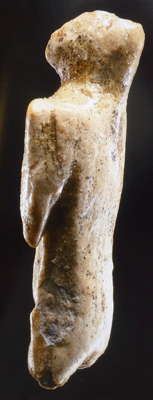
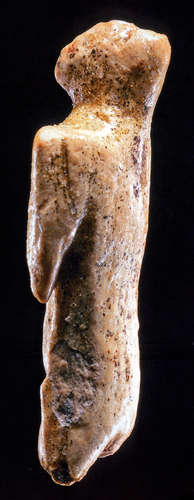
The statuette is between 31 000 and 33 000 years old.
Height:
25.5 mm
The original carving is in the Urgeschichtliches Museum, Blaubeuren.
Photo (left): Rau et al. (2009)
Photo (right): Cook (2013)
Text: Adapted from http://www.ice-age-art.de/anfaenge_der_kunst/fels/mensch.php
The ivory used for Der Kleiner Löwenmensch has split, so that only about one half or less of the figurine remains.
The figurine may have had legs at some time. From the shape of the shoulders and pelvis, it was probably meant to be male.
A slot in the back of the figure at the shoulders may have served to facilitate an attachment to an ivory or wooden plaque, or an ivory stick to prop up the figurine in a small niche.
Photo: https://www.urmu.de/de/Forschung-Archaeologie/Eiszeitkunst/Kleiner-Loewenmensch
References
- Adam, K., Kurz, R., 1980: Eiszeitkunst im süddeutschen Raum, Theiss.
- Cook, J., 2013: Ice Age art: arrival of the modern mind, The British Museum, 18 Feb 2013, ISBN-10: 0714123331, ISBN-13: 978-0714123332
- Rau, S., Naumann D., Barth M., Mühleis Y., Bleckmann C., 2009: Eiszeit: Kunst und Kultur, Thorbecke, 2009, 396p. ISBN: 978-3-7995-0833-9

